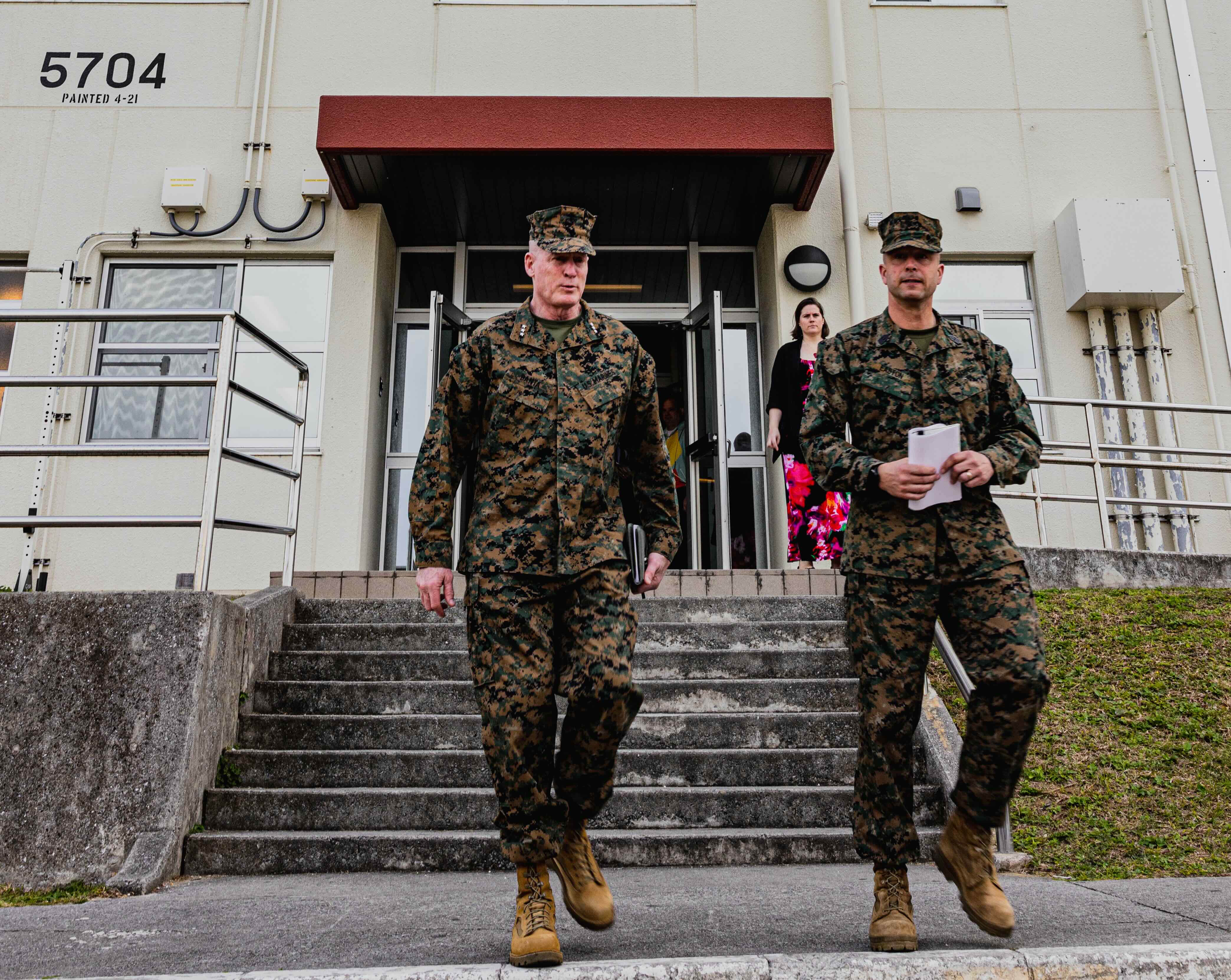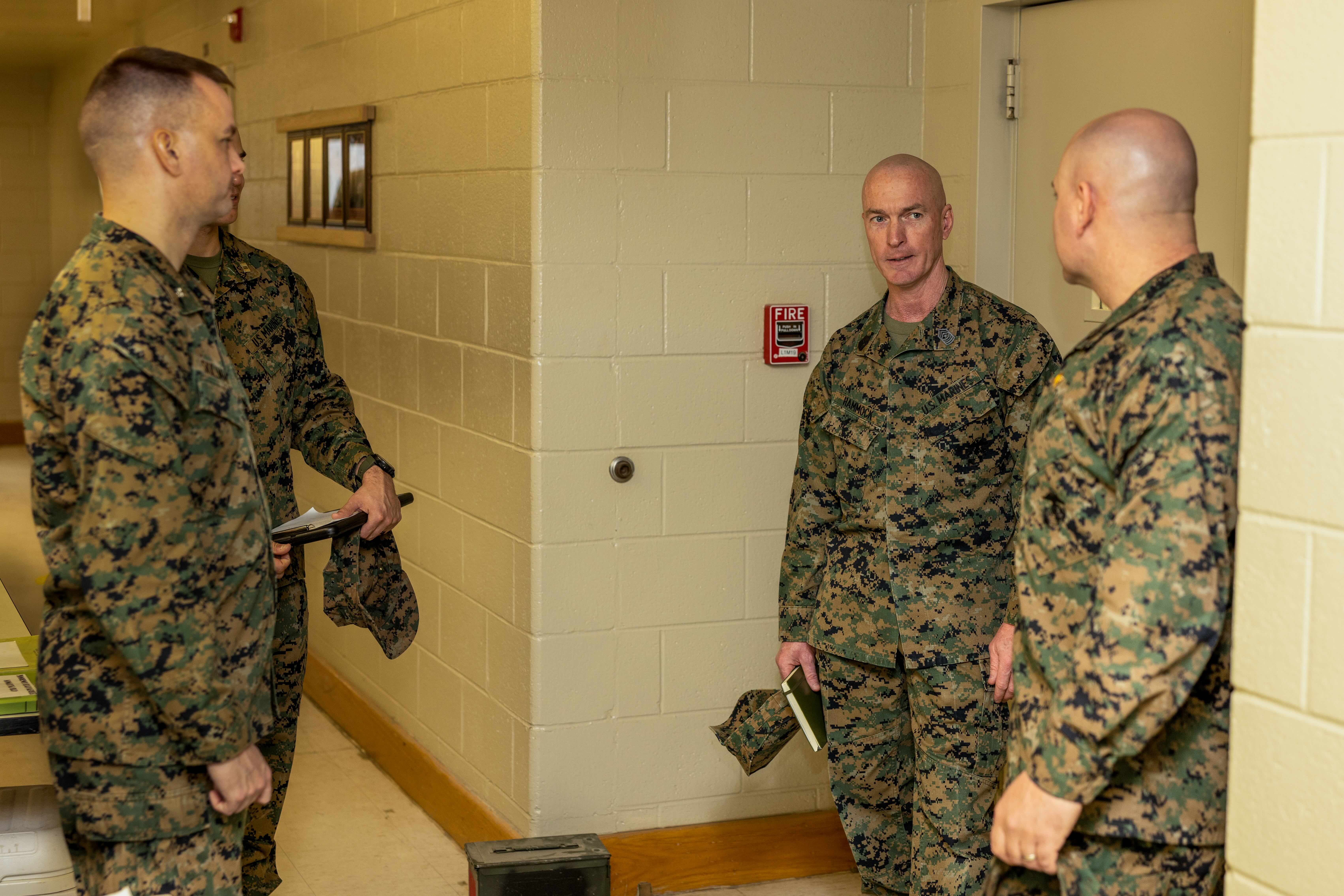
This story has been updated to clarify the investment the Marine Corps is making in the barracks.
SAN DIEGO – Across the Marine Corps, installation commanders and unit leaders are hustling to inspect every barracks room and facility ahead of a March 15 deadline that will produce long lists of repair and maintenance requests.
That’s a good thing, said Col. Thomas “Marty” Bedell, commander of Miramar Marine Corps Air Station in San Diego, which is home to 15,000 and the headquarters of 3rd Marine Aircraft Wing.
Bedell had embarked on an initiative to improve conditions at his local barracks for Marines and sailors after taking command of the installation in 2021. That effort has informed the Marine Corps’ latest campaign and reinvestment in its barracks, which house the majority of its junior enlisted force.
“We began a journey about two years ago to try to focus our efforts to examine what is in the realm of the possible if you were to attempt to optimize some part of this facility’s system, and we got after it,” Bedell told an audience Wednesday at the WEST 2024 conference, cohosted by the U.S. Naval Institute and AFCEA.
“The number of maintenance requests spiked, and that was very encouraging because that meant that the Marines were listening,” he said.
“We said, if something is broken, we need maintenance requests so we can fix it, because things weren’t getting fixed. So they weren’t even putting in maintenance requests,” he added. “We didn’t even know what we were trying to accomplish, what needed to be accomplished.” Some barracks rooms, he noted, were in such terrible condition as to be deemed uninhabitable.
What Miramar officials learned from talking with barracks residents wasn’t a surprise – and the air station is not alone in grappling with aging, poorly maintained or damaged barracks facilities and repair request backlogs. Recent images of broken washing machines, dirt, mold and a dead rat at a School of Infantry West barracks building – first reported by Military Times last month and widely shared on social media – cast a public eye on a recurring problem that has affected all the military services.
Earlier this month, the Marine Corps Installations Command ordered environmental, health and safety inspections of every barracks across the service, directing installation commanders “to assign an E-7 or above active-duty service member or unaccompanied housing civilian equivalent outside of the chain of command to conduct the inspection, which are slated to be completed no later than March 15.” The Marine Corps, though, already has in the works a concept for new initiatives for its barracks, a Barracks 2030 vision for the dozens of buildings across its bases and stations housing single and unaccompanied Marines and sailors. Its “Installations and Logistics 2030” document also included a study for developing recommendations to improve management of the barracks.
Those overarching goals require resources to get after the problem and the resulting maintenance and repair bill.
The Marine Corps’ top leaders have said they’re going to prioritize fixing the barracks over the next five years and figuring out how to effectively spend that additional money. Bedell told the audience during his briefing on installation resilience. “That is the beginning of the road, so what do we need to focus on?”
“Part of the DNA for the Barracks 2030 Roadmap that the Marine Corps is rolling out, I’m proud to say, started at Miramar,” he said.
“I have a little bit of a sneak peak, because we did this about 18 months ago,” he added. “I started by asking the Marines what they wanted. I got a whole bunch of grumpy Marines in a room and said, I’m here to help. I want to know what I need to focus on: HVAC, hot water and responsiveness of maintenance. Those were the three. If something is broken, we need to have some confidence that it is being tracked toward some sort of fix. That’s reasonable. They said, If it’s going to be a week, if it’s going to be a month, if it’s going to be a year, that’s okay.’”
Barracks inspections underway across the Marine Corps will provide “a baseline starting point for what needs to be fixed and for how we prioritize it,” said Bedell. “The spotlight is now on fixing things, how do we get this right. So I am really excited that we’re delivering for the Marines and sailors in the barracks, and we need short-term wins. We need to show them that we understand that their living conditions are part of a larger warfighting capability.”
Why it’s important

Taking care of Marines, Commandant Gen. Eric Smith has said, “is a warfighting function.” And barracks, Bedell noted, quoting Sergeant Major of the Marine Corps Carlos Ruiz, “are a manifestation of what we value and prioritize.”
In a video message posted on his Instagram account in January, in which he shows one of the newest barracks in Yorktown, Va., Ruiz said the Barracks 2030 plan has three key goals: modernize the barracks, professionalize management and employ contractors to fix and maintain the barracks – rather than Marines doing the work.
It’s a tall order, but necessary, Bedell said.
“We have underinvested in our facilities, writ large, and it has come home to roost,” he told the WEST audience. “Across (the Department of Defense) and not just in the Marine Corps, our barracks are in a sorry state of repair.”
“Are we taking for granted the condition of our facilities? Are we taking for granted our barracks?” he said. “Yes.”
“If you go to a room and it’s not good to go,” Bedell said, and “it doesn’t get fixed, you’ve created a value problem for that Marine and for that commander, because we said we’d take care of our Marines when they joined. ‘We’re going to work you very hard, and we’ll take care of you.’ And that’s not happening at the level it should be with regards to how we’re housing our Marines and our sailors. So we’ve got to fix that – because that is a retention decision for many Marines.”
Marines, he noted, say, “‘I love working hard, I love the mission, but I’m not okay with where I live. I am going to be out of the Marine Corps, I am going to get out of the Navy, because there is a values mismatch, there is a safety gap. You’re saying I’m important, but you’re not taking care of me.’
“So we have gotten after that at Miramar,” he said. “So instead of the Marines kind of being at the bottom of the pyramid, with people at the top going to take care of them, we’ve flipped it. The Barracks Support Center that I run and staff is now supporting the O-5 … and the O-6 commanders in executing what they need to be doing for their Marines.”
Roles and responsibilities
Running a barracks complex, said Bedell, a veteran pilot, “requires administration of the barracks, which is connected to the maintenance capability for that barracks – and the funding that’s associated with that.
But “an incredibly frustrating position that we put our commanders in is not having clarity on who owns this problem and who is responsible, and why,” he said. “I need the commanders to conduct Field Day inspections every week, once a week, just like we have done since 1775, where you check and make sure your Marines are living all right, beds’ made, shoes aligned, heads some version of cleaned.
“You’re making sure that the system is running, and you’re also checking to see if there’s anything that needs to be fixed, because commanders can’t fix things. They can fix aircraft, but they aren’t charged with fixing barracks. That’s my job.”
The initial inspections at Miramar revealed rooms that needed to be refurbished, but the extensive work to make them habitable wasn’t within the scope of existing maintenance contracts, Bedell said. But Miramar worked with Naval Facilities Engineering Command and added a 13 barracks projects team to expand the maintenance capability to handle that work.
“I believe the 2030 roadmap has identified that exact requirement. We need to be able to fix these rooms. We need to be able to get them up to a higher level of standard and then we need to keep them there,” the colonel said. The end state, he said, is establishing a minimum habitability standard for each room. A room that fails to meet that, “we’re taking it offline and we’re not putting a Marine in there. It is not habitable.”





